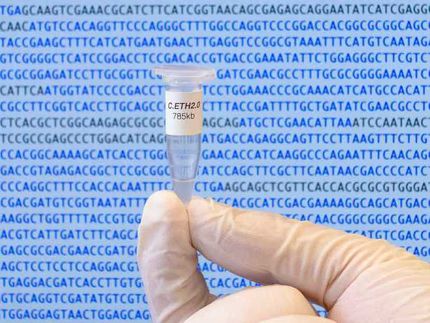New Computational Tool for Rapid Identification of Disease-causing Variations in the Human Genome
Scientists from the University of Utah and Omicia Publish VAAST: Software to Identify Cause of Fatal Childhood Genetic Syndrome
Advertisement
Scientists from the University of Utah and Omicia, Inc., a privately held company developing tools to interpret personal genome sequences, announced the publication in Genome Research of a new software tool called VAAST, the Variant Annotation, Analysis and Selection Tool, a probabilistic disease-causing mutation finder for individual human genomes.
The dramatic decline in DNA sequencing costs is making personal genome sequencing a reality. Already, significant progress has been made in applying whole genome sequencing to cancer prognosis and early childhood disease. Examples include the 2010 publications on Miller Syndrome in Nature Genetics and Science, and similar studies aimed at identifying the unknown genetic defects responsible for some early childhood diseases.
However, a data interpretation bottleneck has limited the utility of personal genome information for medical diagnosis and preventive care. VAAST is a new algorithm to assist in overcoming this bottleneck. VAAST is the product of a collaboration between Mark Yandell, Ph.D., Associate Professor of Human Genetics at the University of Utah School of Medicine, and colleagues, and the Omicia scientific team under the leadership of Martin Reese, Ph.D., the company’s CEO and Chief Scientific Officer.
In the Genome Research paper, Yandell and colleagues show that VAAST provides a highly accurate, statistically robust means to rapidly search personal genomes for genes with disease-causing mutations. The authors demonstrate that as few as three genomes from unrelated children, or those of the parents and their two children, are sufficient to identify disease causing mutations.
“The big challenge in genomic medicine today is how to sift through the millions of variants in a personal genome sequence to identify the disease-relevant variations,” said Dr. Reese. “It’s a classic needle in a haystack problem, and VAAST goes a long way toward solving it. We look forward to integrating VAAST into the Omicia Genome Analysis System currently under development for clinical applications.”
Dr. Yandell added: “VAAST solves many of the practical and theoretical problems that currently plague mutation hunts using personal genome sequences. Our results demonstrate that this tool substantially improves upon existing methods with regard to statistical power, flexibility, and scope of use. Further, VAAST is automated, fast, works across all variant population frequencies and is sequencing platform independent.”
In a separate paper published this week in the American Journal of Human Genetics, Gholson Lyon, M.D., Ph.D., previously at University of Utah and now at the Children’s Hospital of Philadelphia, and colleagues report the use of VAAST as part of an international effort to identify the mutation responsible for a newly discovered childhood disease. This new illness, which they are tentatively calling Ogden Syndrome, is characterized by aged appearance, craniofacial abnormalities, cardiac arrhythmias and other symptoms. The team used X-chromosome exon capture and next-generation sequencing and the VAAST tool to quickly and unambiguously identify the disease-causing mutation in the NAA10 gene that has resulted in this fatal disease in children of two unrelated families.
“VAAST can identify disease-causing mutations with greater accuracy, using far fewer individuals and more rapidly than was previously possible,” said Dr. Lyon. “We are now applying VAAST to many other unknown conditions, including rare Mendelian disorders and other common disorders such as ADHD and autism.”
Original publication
Yandell M, Huff CD, Hu H, Singleton M, Moore B, Xing J, Jorde LB, Reese MG. ; "A probabilistic disease-gene finder for personal genomes"; Genome Res. 2011, 21.
Rope, A et al. “The use of VAAST to identify an X-linked disorder resulting in lethality in male infants due to N-terminal acetyltransferase deficiency"; American Journal of Human Genetics 2011.





















































